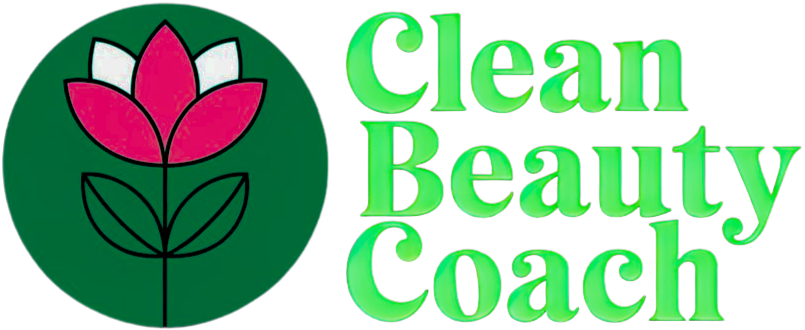In today’s competitive business landscape, effective B2B demand generation strategies are crucial for companies seeking to thrive and expand their market presence.
Women entrepreneurs and business leaders face unique challenges when developing demand generation approaches that resonate with their target audiences.
This article explores essential B2B demand generation tactics specifically tailored for women-owned businesses and female executives in the wellness industry.
Understanding the intersection of business development and women’s empowerment creates opportunities for meaningful connections in the B2B space.
Let’s dive into how you can leverage these strategies to grow your wellness business while maintaining authenticity and purpose.
What Is B2B Demand Generation?
B2B demand generation encompasses all marketing activities designed to create awareness and interest in your products or services among potential business clients.
Unlike B2C marketing, B2B demand generation focuses on building relationships with other businesses rather than individual consumers.
For women in the wellness industry, this means connecting your offerings to the business needs of potential partners, distributors, or corporate clients.
Effective demand generation creates a steady pipeline of qualified leads that understand the value your wellness business provides.
The process combines multiple marketing channels to nurture prospects through each stage of the buying journey.
Why B2B Demand Generation Matters for Women in Wellness
Women-led businesses in the wellness sector have tremendous growth potential when they effectively tap into B2B markets.
Corporate wellness programs represent a multi-billion dollar opportunity for services ranging from nutrition consulting to mental health support.
Female entrepreneurs often bring unique perspectives and solutions that address wellness gaps in traditional business environments.
Developing strong B2B demand generation strategies allows women wellness professionals to scale beyond individual client work.
Your specialized knowledge becomes more impactful when shared with entire organizations rather than just individual consumers.
Key B2B Demand Generation Strategies for Wellness Professionals
Content Marketing with Purpose
Educational blog posts addressing common workplace wellness challenges position you as an authority in your field.
Case studies highlighting successful wellness implementations in corporate settings demonstrate clear ROI for potential business clients.
Wellness-focused whitepapers and research reports showcase your expertise while providing valuable insights for business decision-makers.
Webinars on topics like stress management for executives or team wellness initiatives create engagement opportunities with potential B2B clients.
Infographics visualizing the business impact of wellness programs make complex concepts accessible to busy corporate leaders.
Strategic Email Marketing
Segmented email campaigns allow you to address specific wellness concerns for different types of businesses or industries.
Personalized outreach to key decision-makers shows that you understand their unique organizational wellness challenges.
Automated nurture sequences educate prospects about the business benefits of your wellness offerings over time.
Email newsletters featuring wellness tips for workplace implementation keep your brand top-of-mind with potential business clients.
Invitation-only email content gives VIP prospects access to exclusive wellness insights, building perceived value.
Social Media Engagement
LinkedIn serves as a powerful platform for connecting with business decision-makers interested in corporate wellness solutions.
Thought leadership posts addressing the intersection of business performance and employee wellbeing attract attention from potential B2B clients.
Participation in industry-specific groups allows you to demonstrate expertise while building relationships with potential clients.
Strategic hashtag usage increases the visibility of your content among business audiences searching for wellness solutions.
Video content showing practical workplace wellness implementations helps potential clients envision working with you.
Events and Networking
Hosting wellness workshops for business leaders creates immersive experiences that showcase your expertise.
Speaking engagements at industry conferences position you as an authority in the business wellness space.
Virtual roundtable discussions bring together potential clients facing similar wellness challenges in their organizations.
Pop-up wellness experiences at business venues allow decision-makers to sample your offerings firsthand.
Strategic partnerships with complementary service providers expand your reach to new business audiences.
Understanding the B2B Buying Journey in Wellness
Awareness Stage
Potential business clients first recognize they have a wellness-related challenge within their organization.
Educational content addressing common workplace wellness issues helps prospects identify specific problems they need to solve.
Free wellness assessments give businesses insight into their current state while introducing them to your expertise.
Industry reports highlighting wellness trends create urgency around addressing employee wellbeing.
Podcast appearances discussing workplace wellness topics expand your reach to new business audiences.
Consideration Stage
Decision-makers begin researching potential wellness solutions for their specific organizational needs.
Comparison guides help prospects understand different approaches to workplace wellness implementation.
Testimonials from similar businesses demonstrate credibility and build trust with potential clients.
ROI calculators show the potential business impact of implementing your wellness programs.
Consultation calls allow you to understand specific business needs while demonstrating your expertise.
Decision Stage
Free pilot programs give businesses the opportunity to experience your wellness offerings firsthand.
Custom implementation plans address the specific wellness needs of each potential client organization.
Transparent pricing structures make it easy for businesses to understand the investment required.
Service level agreements clearly outline what businesses can expect when working with you.
Onboarding materials demonstrate your organized approach to implementing wellness solutions.
Measuring B2B Demand Generation Success
Website traffic metrics reveal whether your content is attracting potential business clients.
Lead qualification rates show if you’re targeting the right business audience with your messaging.
Conversion rates at each stage of the funnel highlight where prospects might be dropping off.
Customer acquisition costs help determine the efficiency of your demand generation efforts.
Lifetime customer value calculations justify continued investment in B2B relationship building.
Common B2B Demand Generation Challenges for Women in Wellness
Breaking through gender bias in male-dominated industries requires strategic positioning focused on measurable results.
Scaling personal wellness expertise into business solutions often requires systems thinking and operational frameworks.
Building credibility with corporate decision-makers may require additional certifications or business-focused credentials.
Setting appropriate pricing for B2B wellness services differs significantly from consumer-facing offerings.
Balancing authentic wellness philosophy with corporate expectations requires careful communication strategies.
Creating Your B2B Demand Generation Plan
Start by identifying your ideal B2B client profile based on industry, company size, and specific wellness needs.
Develop a content calendar addressing key pain points your target businesses experience related to employee wellness.
Build strategic partnerships with complementary service providers who already have established business relationships.
Create a lead scoring system to prioritize prospects based on their likelihood to convert and potential client value.
Establish clear metrics for measuring the success of each demand generation channel you implement.
Leveraging Technology for B2B Demand Generation
CRM systems help track interactions with business prospects throughout their buying journey.
Marketing automation platforms enable personalized communication at scale with potential B2B clients.
Analytics tools provide insights into which demand generation tactics are delivering the best results.
Webinar platforms facilitate educational events that attract and engage business decision-makers.
Scheduling software simplifies the consultation booking process for interested business prospects.
Conclusion
B2B demand generation represents a significant growth opportunity for women in the wellness industry looking to expand their impact and revenue.
Developing strategic approaches to attracting and nurturing business relationships allows wellness professionals to scale beyond individual client work.
The unique perspectives that women bring to wellness solutions often address unmet needs in corporate environments.
By implementing the strategies outlined in this article, you can position your wellness business for sustainable growth in the B2B space.
Remember that successful B2B demand generation combines both art and science—authentic relationship building supported by data-driven decision making.







